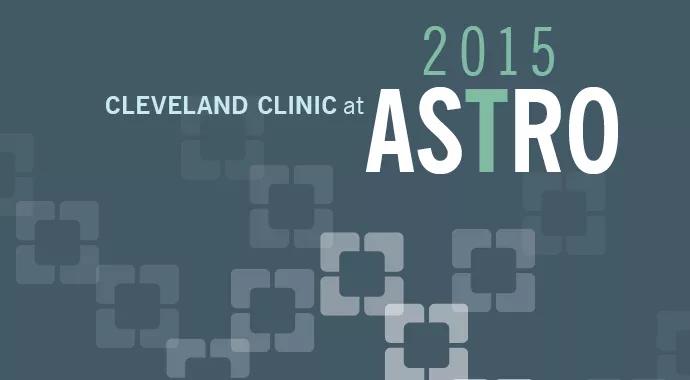Advertisement
Follow-up clinic targets those at high risk

Patients undergoing definitive therapy for head and neck cancer (HNC) often experience a significant symptom burden and have a substantial rate of post-treatment complications. However, a follow-up clinic led by advanced practice nurses (APNs) is reducing those complications for high-risk patients at Cleveland Clinic.
Advertisement
Cleveland Clinic is a non-profit academic medical center. Advertising on our site helps support our mission. We do not endorse non-Cleveland Clinic products or services. Policy

Cleveland Clinic established the APN-led clinic in 2014 to focus on acute rehabilitation after HNC treatment.
A recent study compared outcomes of patients seen in the APN clinic with those of patients who had traditional follow-up appointments.
“In comparison to the standard follow-up practice – typically one visit at three to four weeks in the 90 days immediately following radiotherapy (RT) or chemoradiotherapy (CRT) – the APN clinic sought to identify high-risk patients and provide those patients with more intensive follow-up,” says Bridgett Harr, CNP, one of the researchers participating in the APN clinic. “The goal was to decrease both ER visits and hospital admissions.”
Twenty-five patients were identified who were considered to be high risk based on the presence of one or more of the following factors: limited social support (35 percent), nursing home resident (16 percent), multiple hydrations during treatment (18 percent), stereotactic body radiotherapy (SBRT) re-irradiation (15 percent) or feeding tube (16 percent). These patients, all of whom were treated after the APN clinic was established, were known as the APN clinic group.
An additional 24 HNC patients who were treated prior to the APN clinic’s initiation were identified from an institutional review board-approved database. This group was known as the standard follow-up group.
All patients were treated with either radiation alone or concurrent chemoradiation.
The standard follow-up group was seen at four to six weeks post-radiotherapy, then again at three months post-RT. The APN clinic group was seen beginning at two weeks after therapy and every two to four weeks thereafter until symptoms stabilized. Adverse events, including ER visits and/or hospital admissions, were recorded as the primary endpoint.
At the end of the study, 18 patients had experienced 26 adverse events, including 12 patients (50 percent) in the standard follow-up group and six patients (24 percent) in the APN clinic group (p=0.059). Among those treated with radiation alone, in the standard group, 60 percent of patients had a post-RT adverse event compared to only 16.7 percent of patients in the APN clinic group (p=0.010).
“Those treated with radiation alone who were seen in the APN clinic had the most significant decrease in complications,” Ms. Harr says.
No difference was found in patients treated with chemoradiotherapy, likely due to the intensive post-RT follow-up provided by medical oncology (p=0.816), according to study results.
Advertisement
The initiation of an APN follow-up clinic allowed for more frequent outpatient visits and more intensive symptom management, which reduced the number of ER visits and hospital admissions experienced in the first three months post-RT, Ms. Harr says.
“We hypothesize this was due to the fact that patients were seen nearly twice as often in the APN clinic (2.0 versus 1.2 visits),” she adds.
The study’s authors theorized that APNs are in a unique position as independent providers to help provide high-quality, cost-effective care, and study results bear this out.
“This study illustrates an important role in radiation oncology for APNs to improve healthcare value through more frequent follow-up for symptom management,” Ms. Harr says. With the overall push in healthcare to avoid ER visits and hospitalizations, the APN follow-up clinic also has the potential to decrease the burden on the healthcare system by avoiding inappropriate use of healthcare resources.
The study’s results were presented at the 2015 annual meeting of the American Society for Radiology Oncology (ASTRO) in San Antonio.
The number of participants in this study was relatively small (n=49). “As such, there needs to be further investigation with a larger patient group,” Ms. Harr says.
High-risk patient characteristics for this study were identified through provider experience with treatment-related toxicities. Further studies also are needed to identify statistically high-risk patient characteristics to help identify patients requiring more intensive care during and after treatment.
_________________________________
Relevant Disclosures
Bridget Harr owns stock in Johnson & Johnson.
Advertisement
Advertisement

Polygenic risk score could help predict who will develop this aggressive breast cancer

Platinum-eligible phase 3 trial of enfortumab vedotin and pembrolizumab yields ‘unprecedented data’

Extent of baseline burden impacts progression-free and overall survival

Further study warranted to better understand the clinical implications of these findings

Real-world study shows high response rates that are durable with commercial lisocabtagene maraleucel

Oral anticoagulants may be beneficial but need to be balanced against bleeding risks

First-of-its-kind research investigates the viability of standard screening to reduce the burden of late-stage cancer diagnoses

Study demonstrates ability to reduce patients’ reliance on phlebotomies to stabilize hematocrit levels